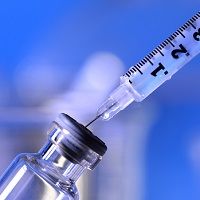High-dose IncobotulinumtoxinA Mitigates Sialorrhea in Parkinson's Disease
Researchers found that 100U of incobotulinumtoxinA significantly reduced unstimulated salivary flow rate during the 16-week trial and through the 48-week extension.

IncobotulinumtoxinA (Xeomin, Mertz) successfully treated sialorrhea in Parkinson’s disease and other neurological conditions during a placebo-controlled study and dose-blinded extension period.
The phase 3 Sialorrhea in Adults Xeomin Investigation (SIAXI) study sought to assess the efficacy and safety of injected doses of incobotulinumtoxinA for the treatment of sialorrhea. Patients treated with 100U incobotulinumtoxinA achieved statistically significant results at week 4 (W4) compared to placebo. Treatment with 75U was more effective than placebo but did not reach statistical significance.
“Uncontrolled sialorrhea is a very troublesome and disabling symptom associated with Parkinson’s disease and other various neurological conditions,” said Olaf Michel, PhD, vice-chairman of the department of rhinology, head, and neck of the University Hospital of Vrije Universiteit Brussel, Brussels, Belgium, a study author who presented the SIAXI results.
Researchers enrolled 184 adult subjects with chronic troublesome sialorrhea due to Parkinson’s disease (PD) or atypical parkinsonism/stroke/traumatic brain injury. Sialorrhea etiologies by percentage were: PD 70.6%, atypical Parkinson syndromes 8.7%, stroke 17.9%, and traumatic brain injury 2.7%.
Participants were randomized (2:2:1) into 3 groups, receiving either incobotulinumtoxinA 75U (n=74), 100U (n=74), or placebo (n=36). The treatment was injected into the parotid and submandibular glands at a ratio of 3:2, bilaterally.
Co-primary outcomes for SIAXI were: change in unstimulated salivary flow rate (uSFR) at week 4 compared to baseline and Global Impression of Change Scale (GICS) 4 weeks post-injection. The 100U group saw significant declines in uSFR throughout the main period ( -0.13g/min W4, -0.13g/min W8, -0.12g/min W12, and -0.11g/min W16), however, the 75U group only significant effects during week 8 (-0.08g/min) and week 12 (-0.10g/min). At week 16 the effect of 75U declined.
Similarly, 100U significantly impacted participants’ GICS score at weeks 4, 8, 12, and 16, while 75U showed significant impact only at weeks 8 and 12.
“Both doses of incobotulinumtoxinA were safe and well tolerated over the whole time,” said Michel. However, he added that “the safety profile is in favor of a higher dose of incobotulinumtoxinA.”
Following the main 16-week period, eligible participants continued on to an extension period with 3 additional 16-week cycles. These 173 patients with sialorrhea were divided between 75U and 100U treatment. The effects of incobotulinumtoxinA stabilized over the course of these cycles.
“We can say that single injections of incobotulinumtoxinA in doses of 75U or 100U led to a clinical improvement in sialorrhea due to Parkinson’s disease or other neurological conditions up to 16 weeks, but only the 100U dose resulted in statistically significant benefits to the coprimary endpoints at 4 weeks,” said Michel. “The effect was further increased during the 3 additional treatments in the extension period.”
Earlier this year the US Food and Drug Administration (FDA) accepted Merz’s supplemental Biologics License Application (sBLA) for Xeomin® (incobotulinumtoxinA) for the treatment of chronic sialorrhea due to neurologic disorders. If approved, the biologic will be the first neurotoxin with this indication in the US. The FDA is expected to announce its decision in Q4 of 2018.
The presentation, “SIAXI: Efficacy and safety of Xeomin (incobotulinumtoxinA) for the treatment of sialorrhea in Parkinson’s disease (PD) and other neurological conditions: Results of a Phase III, placebo-controlled, randomized, double-blind study,” was given at the American Academy of Neurology Annual Meeting in April 2018.
Click here to sign up for more MD Magazine content and updates.
For more extensive coverage from the American Academy of Neurology Annual Meeting (AAN) and other neurology-focused meetings, visit MD Magazine’s sister site NeurologyLive.
Related Coverage >>>
Solving the Alzheimer's Disease Therapy Drought
Non-invasive Neuromodulation Reduces Essential Tremor in 65% of Study Patients
Alfred Sandrock, MD, PhD: Progressing Parkinson's Therapies and What They Target